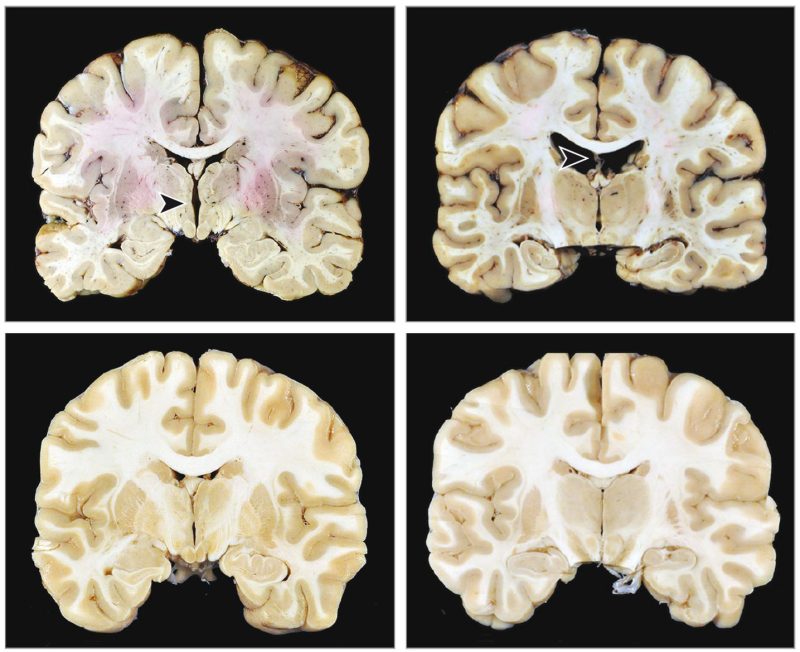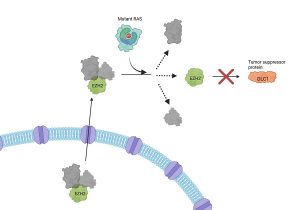CTE identified in brain donations from young amateur athletes

Media Advisory
Monday, August 28, 2023
Study examined athletes who played contact sports, showed CTE symptoms, and died before age 30.
What
In a study of 152 deceased athletes less than 30 years old who were exposed to repeated head injury through contact sports, brain examination demonstrated that 63 (41%) had chronic traumatic encephalopathy (CTE), a degenerative brain disorder associated with exposure to head trauma. Neuropsychological symptoms were severe in both those with and without evidence of CTE. Suicide was the most common cause of death in both groups, followed by unintentional overdose.
Among the brain donors found to have CTE, 71% had played contact sports at a non-professional level (youth, high school, or college competition). Common sports included American football, ice hockey, soccer, rugby, and wrestling. The study, published in JAMA Neurology, confirms that CTE can occur even in young athletes exposed to repetitive head impacts. The research was supported in part by the National Institute of Neurological Disorders and Stroke (NINDS), part of the National Institutes of Health.
Because CTE cannot be definitively diagnosed in individuals while living, it is unknown how commonly CTE occurs in such athletes. As in all brain bank studies, donors differ from the general population and no estimates of prevalence can be concluded from this research. Most of the study donors were white, male football players with cognitive, behavioral, and/or mood symptoms. Their families desired neuropathologic examination after their loved one’s early death and donated to the Understanding Neurologic Injury and Traumatic Encephalopathy (UNITE) Brain Bank. There were no differences in cause of death or clinical symptoms between those with CTE and those without.
Nearly all the athletes with CTE were found to have a mild form (stages I or II, on a four-stage scale) in the study led by Ann C. McKee, M.D., chief of neuropathology at VA Boston Healthcare System and director of the Boston University CTE Center. Those with CTE were more likely to be older (average age at death 25.3 years vs. 21.4). Among athletes who played football, those with CTE had a significantly longer playing career (2.8 years longer, on average) compared to those without CTE. Notably, the study includes what the authors believe to be the first report of CTE in an amateur female soccer player.
All athletes in this study had shown clinical symptoms, regardless of CTE status, as reported by those who knew them. Clinical symptoms of depression, apathy, difficulty controlling behaviors, and problems with decision-making were common, even among donors without CTE.
Taken together, the findings demonstrate that evidence of CTE can be found in young, symptomatic athletes who play contact sports; however, more studies are needed to understand the relationship between repeated head injury, white matter damage, CTE, and clinical symptoms. Given that 58% of the brain donors who died at a young age did not have evidence of CTE, the causes of severe symptoms in this group are likely due to multiple factors.
This study was funded in part by NINDS (U01NS086659, U01NS093334, U54NS115266, R01NS078337, R56NS078337, K23NS102399), the National Institute on Aging (NIA) (RF1AG057902, 5R01AG062348, R01AG061028, K23AG046377, P30AG13846), and the National Center for Advancing Translational Medicine (NCATS) (UL1TR001430).
Additional support came from the Andlinger Foundation, National Football League, MacParkman Foundation, National Operating Committee on Standards for Athletic Equipment, Nick and Lynn Buoniconti Foundation, the Alzheimer’s Association, the Concussion Legacy Foundation, World Wrestling Entertainment, the US Department of Defense, and the US Department of Veterans Affairs.
Who
Nsini Umoh, Ph.D., TBI program director, NINDS Division of Neuroscience
To arrange an interview, please contact NINDSPressTeam@ninds.nih.gov.
Article
McKee AC, et al. “Neuropathological and Clinical Findings in Young Contact Sport Athletes Exposed to Repetitive Head Impacts.” August 28, 2023. JAMA Neurology. DOI: 10.1001/jamaneurol.2023.2907.
About the National Institute on Aging (NIA): NIA leads the U.S. federal government effort to conduct and support research on aging and the health and well-being of older people. Learn more about age-related cognitive change and neurodegenerative diseases via NIA’s Alzheimer’s and related Dementias Education and Referral (ADEAR) Center website. Visit the main NIA website for information about a range of aging topics, in English and Spanish, and stay connected.
NINDS is the nation’s leading funder of research on the brain and nervous system. The mission of NINDS is to seek fundamental knowledge about the brain and nervous system and to use that knowledge to reduce the burden of neurological disease.
About the National Institutes of Health (NIH):
NIH, the nation’s medical research agency, includes 27 Institutes and Centers and is a component of the U.S. Department of Health and Human Services. NIH is the primary federal agency conducting and supporting basic, clinical, and translational medical research, and is investigating the causes, treatments, and cures for both common and rare diseases. For more information about NIH and its programs, visit www.nih.gov.
NIH…Turning Discovery Into Health®








